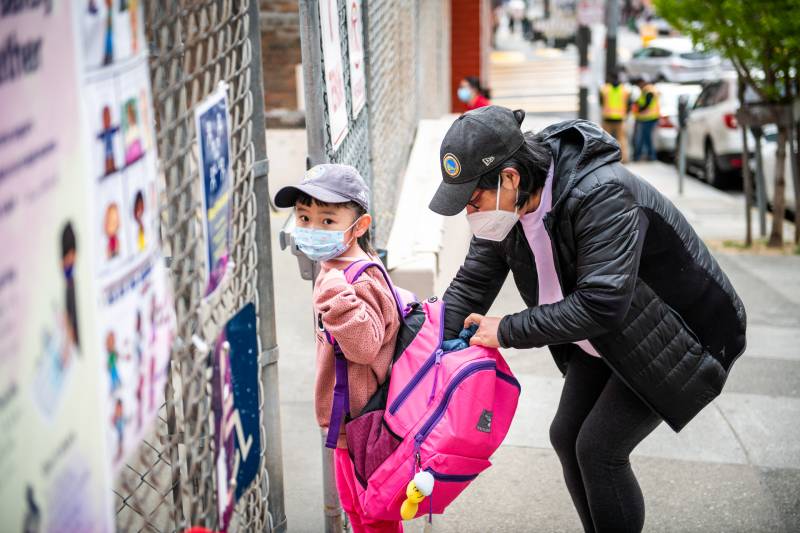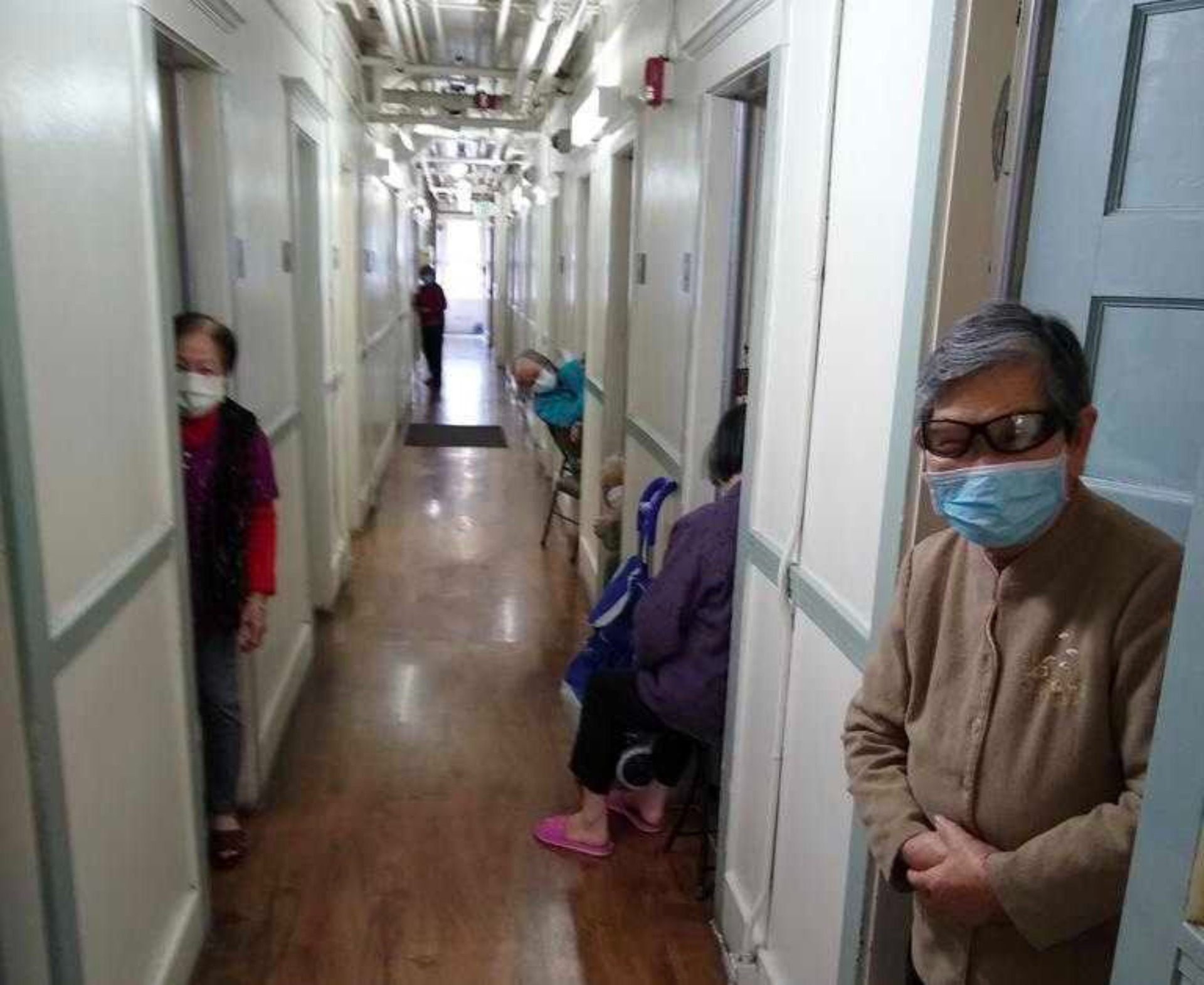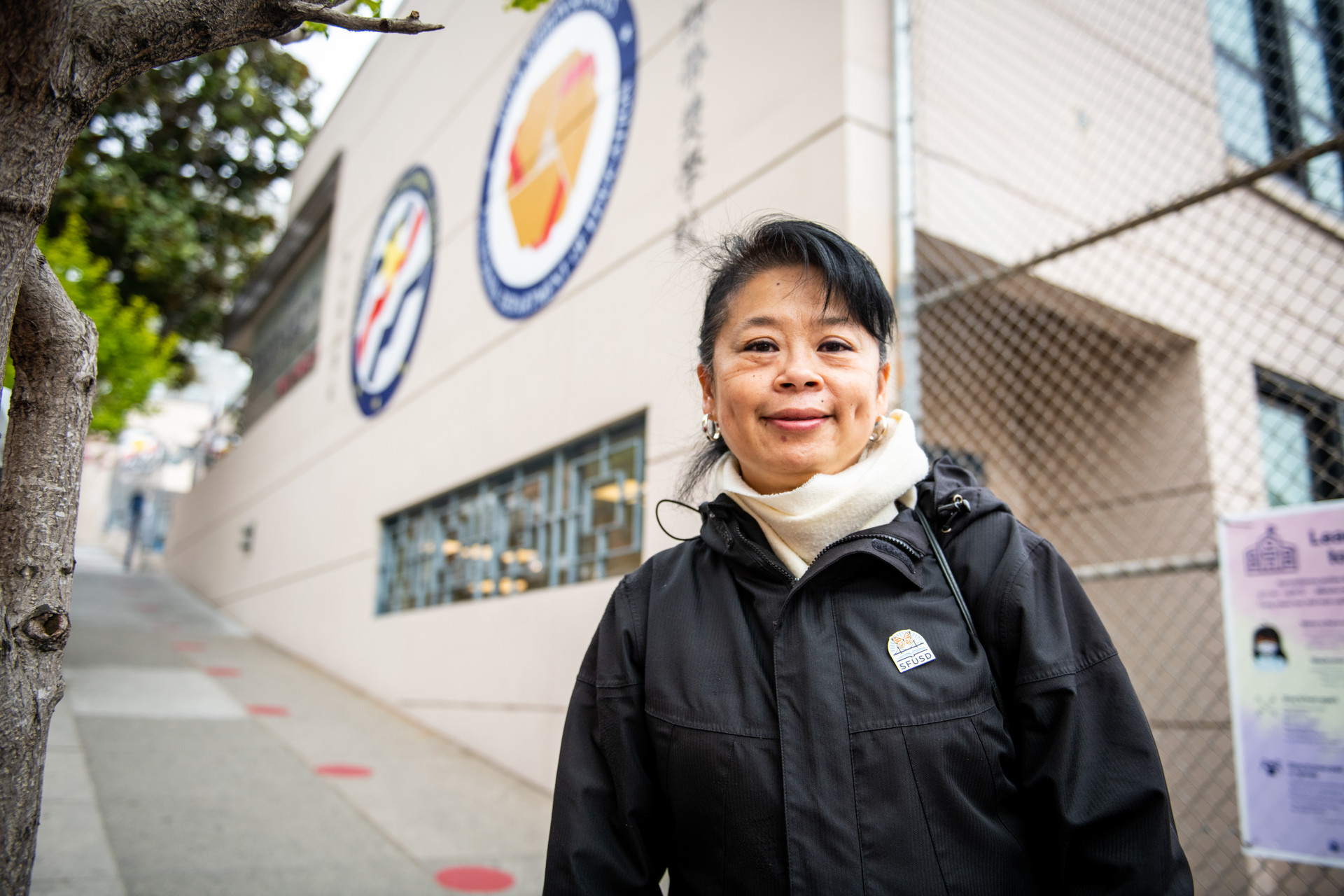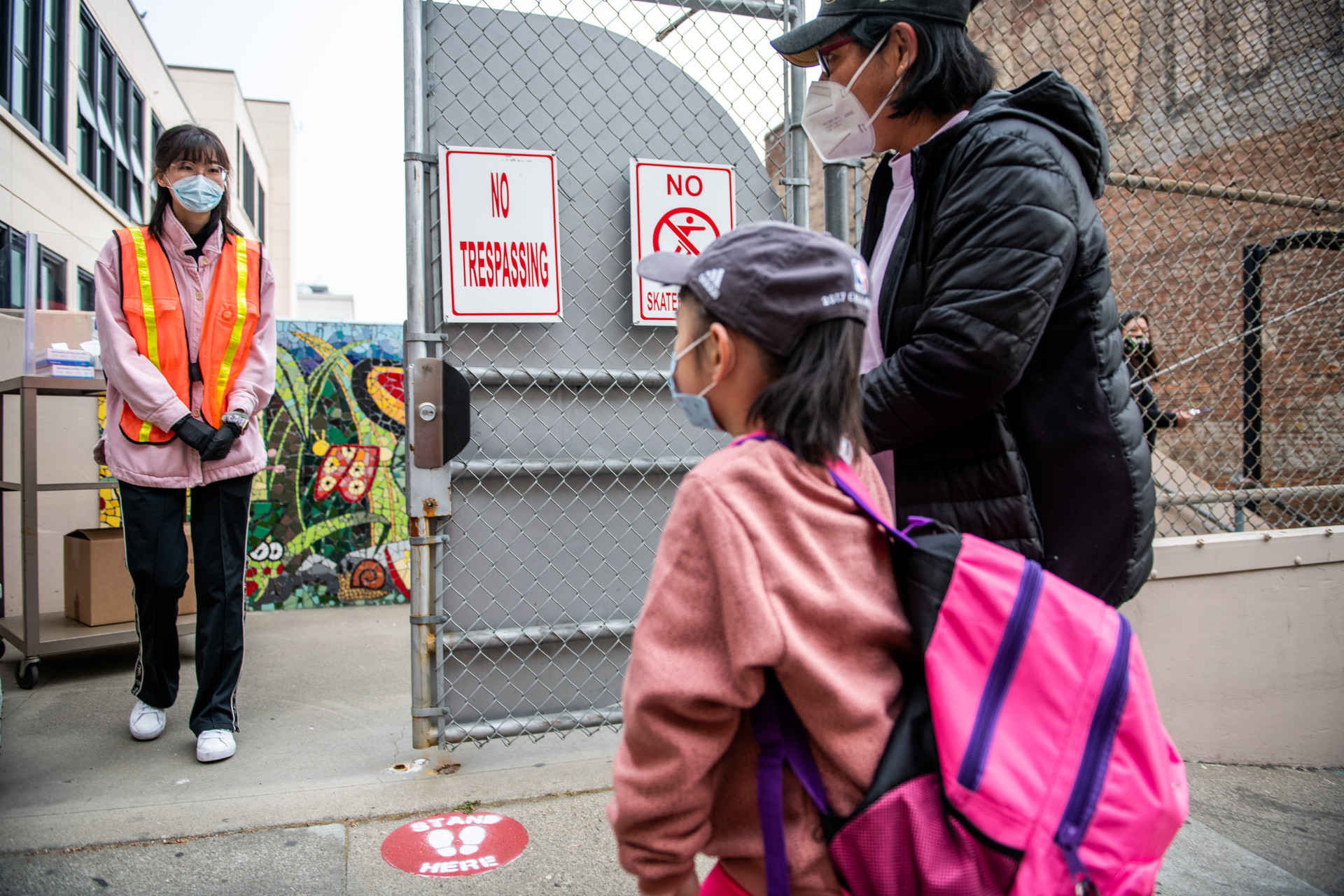Hundreds of parents who live in communal housing in San Francisco are organizing with a singular message: Keep our kids out of school.
The Chinatown Community Development Center, which owns and operates communal housing in the city, measured that fear directly: Of 294 families living in such housing who answered a recent survey, representing roughly 400 SFUSD students, 70% oppose in-person learning for their kids, and only 30% are in support.
Most of those families surveyed lived in Chinatown, and many identify as Chinese or Chinese American, said the Chinatown CDC. The organization surveyed its tenants who have at least one child under 18 living in their household, by phone the week before SFUSD's fall semester started.
Those who support in-person learning largely said they were worried about unemployment benefits expiring in September, and need to send their children back to school so the adults can work.
On the other hand, those who oppose bringing their kids back to school are especially concerned that children under 12 are not yet vaccinated, and are worried that schools aren’t providing enough ventilation. They also voiced concern over COVID transmission on public transit and asked whether school buses could help mitigate that concern.
But despite the opposition to in-person learning, many of these families don't have much of a choice.
The new data comes after more than a year of public drumbeating to reopen schools during the pandemic voiced by the city’s most vocal parents — with “decrease the distance!” becoming their signature rallying cry — leading into the San Francisco Unified School District opening its doors to kids in August.
But just one week before that fateful day, on Aug. 10, a swarm of equally furious parents stormed SFUSD’s monthly (virtual) meeting. Their request? The exact opposite the public had heard for months. These parents wanted their kids to stay home.
More than 2,000 of them — mostly Chinese and Chinese American — signed a petition asking SFUSD to offer more options for their kids to safely evade the increasingly spreading delta variant.
“We are concerned that the start of in-person learning in Fall will lead to greater infection rates, not only in the children themselves, but also for vulnerable family members,” their letter read. “We do not wish to force distance learning upon everyone, but believe it is imperative to provide it to those families who need it.”
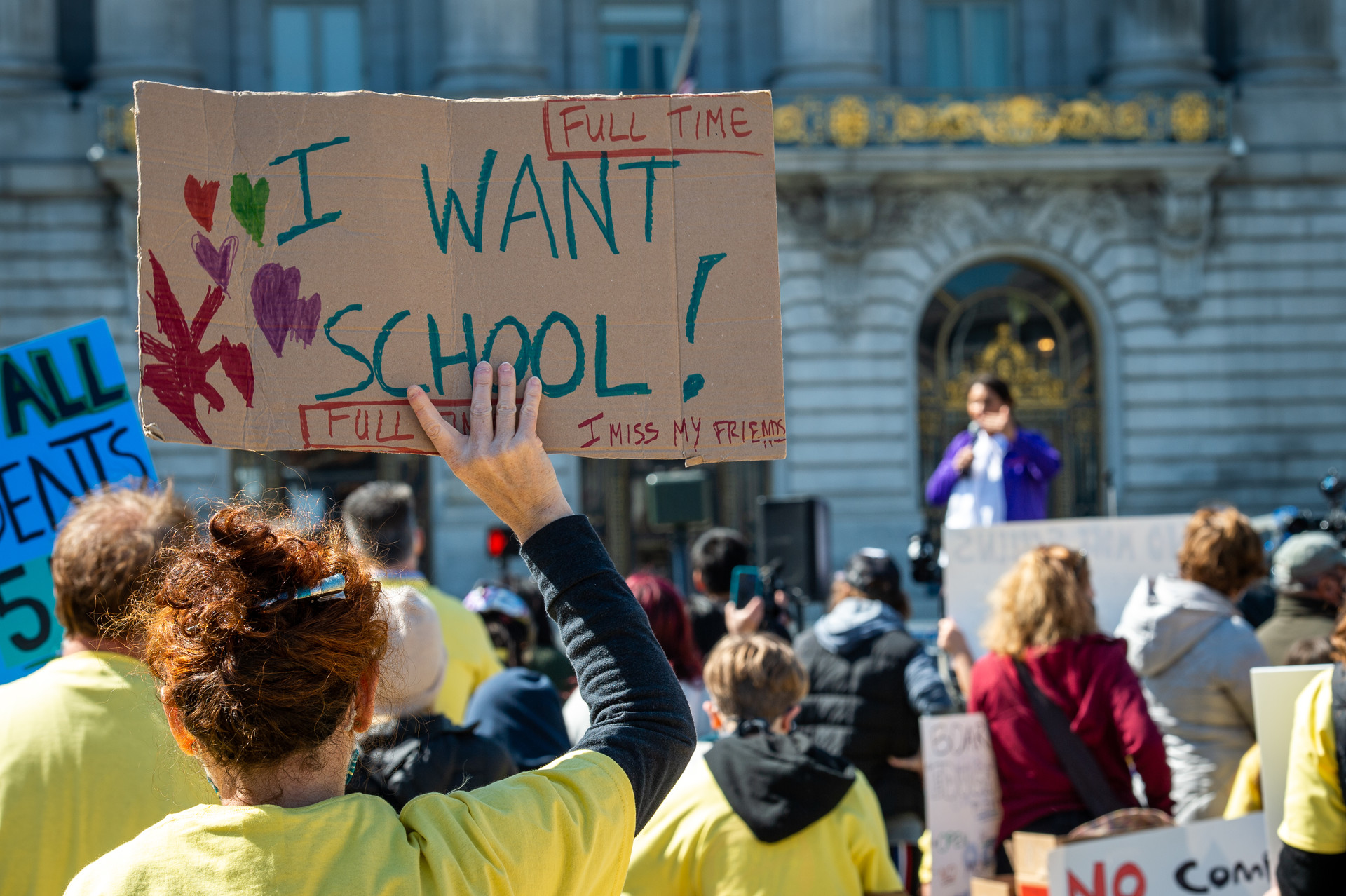
That effort comes as no surprise to Jen Chan, resident services manager at the Chinatown CDC, who works with families who live in the organization's single-room occupancy housing, many of whom are Chinese and Chinese American. She says living conditions may be one reason those families would prefer to keep their kids at home, especially in single-room occupancy housing.
SROs are communal spaces where families often live in a single room, sharing kitchens and bathrooms with tenants on the same floor — families who may be especially concerned about being unable to quarantine should the worst happen.
“There's a lot of fear,” Chan said. And that fear may be particular to the Chinese community due to hard-lived experience, she said.
“A lot of our families were immigrants, right? They have heard of the outbreaks of SARS, the outbreak of COVID in their home countries in Hong Kong and in China. And they understand and have been impacted by people getting sick in their family. Deaths in their family,” she said.
The notion that scores of parents want their kids to stay at home may be a surprise to those reading news headlines for the last year.
Local news has for months amplified the voices of more organized groups like Decreasing the Distance. Some of those more amplified voices are calling for schools to reopen sooner rather than later, and are even recalling San Francisco school board members based on the idea that they single-handedly kept kids home.
And their message has largely dominated the conversation about schools.
But when it came time to finally let kids back in classrooms, the 450 online spots for distance learning provided by the district were quickly gobbled up. The school district has admitted 700 students who applied by July 30 to be in their online learning program, said SFUSD spokesperson Laura Dudnick.
But that isn’t the sum total of the students wanting to stay home.
To accommodate that growing number, SFUSD opened its applications for one of two independent learning programs with a deadline of Aug. 27.
But, Dudnick added, “we strongly encourage students who are able to participate in in-person learning to do so, as it is the best option for the vast majority of students.”
And the number of families who want distance learning may be far higher than the official ones known to SFUSD. Chan told KQED some who desire distance learning haven’t applied for fear of losing priority in their desired schools, and many think distance learning isn’t even an option.
But it’s one they’d take if they had the chance.
Pushing for more open spots, local parents and parents of kids in SRO hotels are organizing for their own interests, demanding more distance learning options. KQED has seen screenshots of their group discussions on WeChat — the social media platform of choice for many in the Chinese community — with more than 800 people clamoring for distance learning options.
